Support strong Canadian climate journalism for 2025
This story was originally published by Inside Climate News and appears here as part of the Climate Desk collaboration
LaUra Schmidt first came up with the idea of climate-focused peer support circles when she was in graduate school a decade ago at the University of Utah. She thought of support circles as a way to help front-line climate workers who were feeling isolated and often paralyzed by the magnitude of global warming.
Her research in environmental humanities focused on building resilience among those most involved in countering the climate crisis. She found that the more people knew about climate science, the more often they felt alone and wracked by grief, anxiety and despair.
Over the next three years, Schmidt’s work would morph into the Good Grief Network, which has become an international nonprofit organization that runs peer support groups for people suffering from grief and “eco-distress.” Schmidt and her partner, Aimee Lewis Reau, have developed a 10-step program for “resilience and empowerment in a chaotic climate” that begins with, “1. Accept the severity of the predicament,” and includes “2. Be with uncertainty,” “8. Grieve the harm I have caused” and “10. Reinvest in meaningful efforts.”
For group therapy, there are also a myriad of less formal climate support sessions that are often called climate cafes—in coffee houses, on college campuses and most importantly, online—that typically have a lower barrier to entry.
All of these group counseling sessions are based on the premise that it is easier to work through the emotional response to a looming crisis when you have people to support you. Schmidt is not the first person to develop this insight.
Joanna Macy has been paving the way since her first anti-nuclear group retreats in the 1970’s. Now 95, Macy’s focus has shifted from nuclear to climate change and the wider effects of environmental degradation.
Her organization, The Work that Reconnects, focuses on fostering connection between people and the natural world and relies heavily on Buddhist philosophy. Over the years Macy’s work created a model to push back on the “privatization of our pain,” as Schmidt put it.
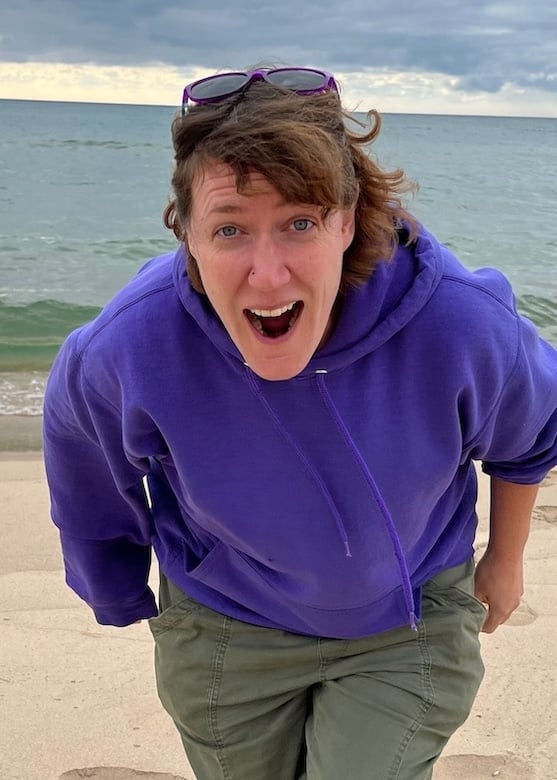
But Schmidt’s work eventually deviated from the path set forth by Macy. While Macy’s organization relies on a model of weekend workshops and week-long conferences, Schmidt felt strongly that a series of sessions spread out over several months could create more trust and deeper connections between participants.
“So many of us don’t have partners or friends or family members or community members that we can talk to,” Schmidt said, “and so we keep this all bottled up inside, and then we start to feel like we’re crazy.”
Just giving people a place to talk about these taboo topics, she said, is a powerful thing.
During a recent practice session for new Good Grief Network facilitators, around a dozen participants logged onto Zoom from half a dozen countries and at least as many time zones. The group was entirely composed of women, who ranged in age from college students to retirement.
Amber, one of the facilitators, started off, giving her name, pronouns, location she was logging on from and one thing that had been on her mind that week. She is a mom with a young family and said she has been plagued by questions over what the world would be like by the time her child reached adulthood.
Check-ins came from Canada, Ireland, the Netherlands, Germany and all over the United States. No one on the call was a trained mental health provider. Ali, another facilitator, soon directed the conversation to step two of the network’s 10-step process: “Be with uncertainty.”
For the next hour, participants freely exchanged thoughts, fears and hopes on what the future held if global warming went beyond 1.5 degrees Celsius, including apocalyptic scenarios in which it went way beyond.
One person observed that growing up in a household with addiction meant that uncertainty was the enemy, because if things could turn out badly, they usually would.
Another noted that uncertainty is just a more cautious word for possibility.
After an hour, when the session came to a close, participants shared what they had gotten out of the meeting.
As she was signing off, one of the new facilitators who had been the most apprehensive about uncertainty took a moment to reevaluate. After dreading uncertainty all her life, she said, “in the face of a looming collapse, uncertainty is actually pretty cool.”
‘It Can’t Just Be Me’
DM Witman, an environmental scientist and artist at University of Texas Rio Grande Valley, found the Good Grief Network a panacea to the isolation of climate anxiety.
After merging her two great loves, art and science, on a project called “Melt” that explored earth’s changing landscapes—showcasing just how much ice has been lost in the last fifty years—she found herself in 2017 burned out and unable to create.
Over the course of the following year, Witman said she was “mourning not just humanity’s impact on our world, but also my individual contribution, as if being human automatically makes me culpable,” and she didn’t know how to work through her grief and guilt on her own.

At first Witman struggled to articulate what she was feeling. There was little attention given to the mental health effects of climate at the time, but eventually she came across the term eco-grief, which seemed to describe what she was experiencing perfectly.
Once Witman had a name for what she was feeling, she was able to start working through the mourning process.
At the time, Witman worked at Unity Environmental University, in New Gloucester, Maine. That is where she met Psychologist William Hafford. He taught the psychology of loss and the rewilding. The two decided to combine their expertise and together they wrote and illustrated A Guide to Loss and Grieving in the Anthropocene.
The work “allowed me to start having conversations with people,” said Witman. “It just felt very isolating. But I was like, ‘Hey, I can’t be the only one, right? It can’t just be me.’”
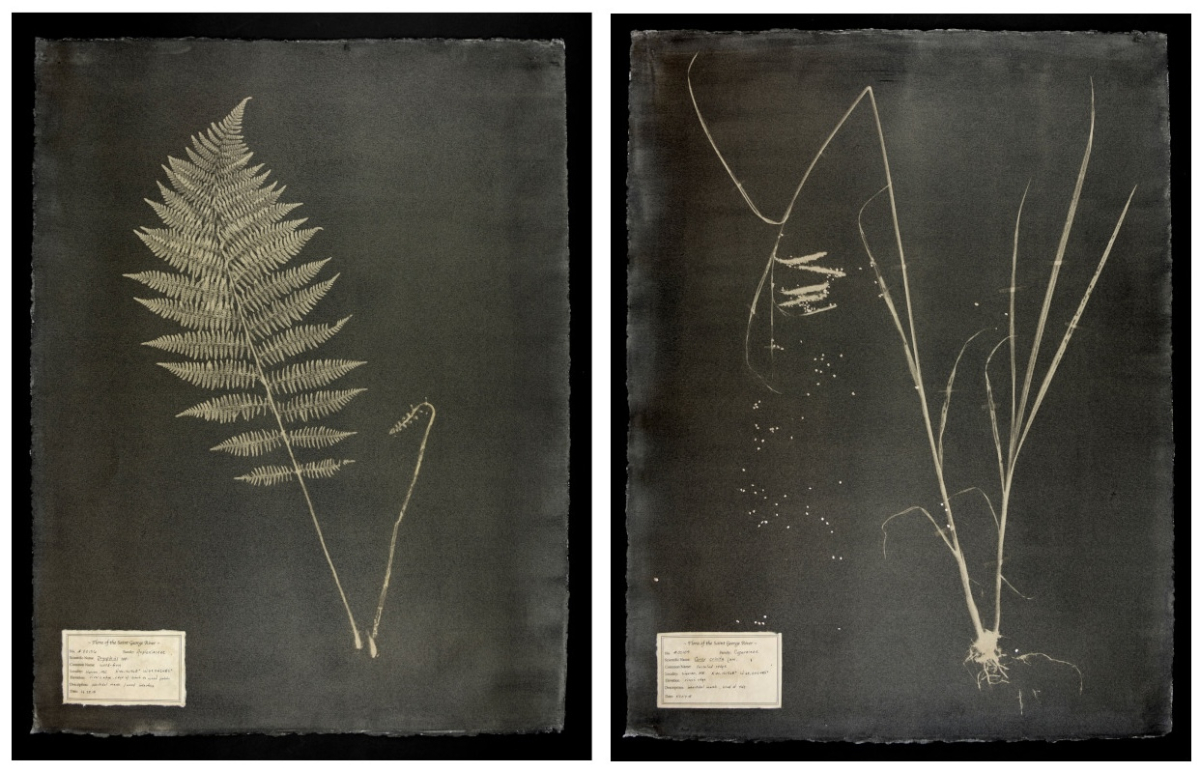
Witman learned of the Good Grief Network from Hafford while the two were doing research for the guide. After completing the program, she found herself wishing the same kind of community could be found in her part of Maine. That desire spurred her and Hafford to try creating spaces for dialog on college campuses and at art galleries across the state.
When they first started, Witman had no idea if anyone would actually show up. But people did come, and were interested in sharing.
“Most of them felt the same way that I had, isolated, unable to talk to their friends and family about what they were going through,” said Witman. “So our goal became to bring climate conversations to the forefront and then connect people within their own communities who would then have each other after we were gone.”
An Art Therapy Climate Cafe
Like Witman, Mor Keshet knows how essential it is to find an outlet for climate emotions. Plenty of people still seek out her Long Island, New York, integrative art therapy practice for more traditional therapy concerns. But over the last few years, the number of people seeking help for climate distress has shot up.
Keshet is based in Huntington, New York, a prosperous community situated on the Long Island Sound where for most people, price and insurance coverage aren’t a barrier to seeking therapy. But Keshet knows this is not the reality in less affluent areas just a few miles away.
With that in mind, Keshet is donating time to bring climate cafes to unexpected places in New York City and beyond. In late July, Keshet co-facilitated a two-hour climate cafe at the Climate Imaginarium on Governer’s Island in New York City with co-facilitator Anya Kamenetz, of the Climate Mental Health Network.
Kamenetz’s work creating a climate emotions wheel made a partnership between her and Keshet ideal for facilitating an art therapy-based climate cafe. After about 40 minutes of group discussion, the 30 participants were introduced to the climate emotions wheel: a visual representation of the range of common emotions associated with climate change. Then, they were invited to use art supplies and stencils to create a “wheel,” or mandala, from the Sanskrit word for circle, or sacred circle, to depict their feelings about climate change.
Climate change “elicits such deep emotion for people that it can be very difficult to articulate in words,” said Keshet. She hopes that by having participants create mandalas she can combine the deeper awareness intrinsic to meditation with the cognitive openness of art therapy to help people access the feelings they have a hard time talking about.
Keshet and collaborators at the Climate Emotional Resilience Institute and the Climate Psychology Alliance-North America are looking to expand the climate mandala project into a framework that can be utilized by other facilitators and organizations in the future, expanding the resources available for people to process their climate emotions visually as well as verbally. She envisions the mandala project culminating in an exhibition of works made by both professional artists contending with their climate emotions and laypeople who feel inspired to create their own climate mandala, coming together synergistically to show the breadth and depth of climate emotions.
A Relationship With the Climate Crisis
Before working with the Good Grief Network, one scientist at the Environmental Protection Agency said she didn’t know “how to have a relationship with this crisis.”
The scientist, who asked that her name not be revealed, has worked for the EPA for over 20 years and knows every excruciating detail of what humans are doing to the planet. She thought she had a handle on the emotional toll her knowledge was taking but a few years ago came to realize that she had never dealt with the psychological consequences of climate change.
Her experience seems to confirm Schmidt’s initial thesis that the more people knew about the climate crisis, the more isolated they often felt.
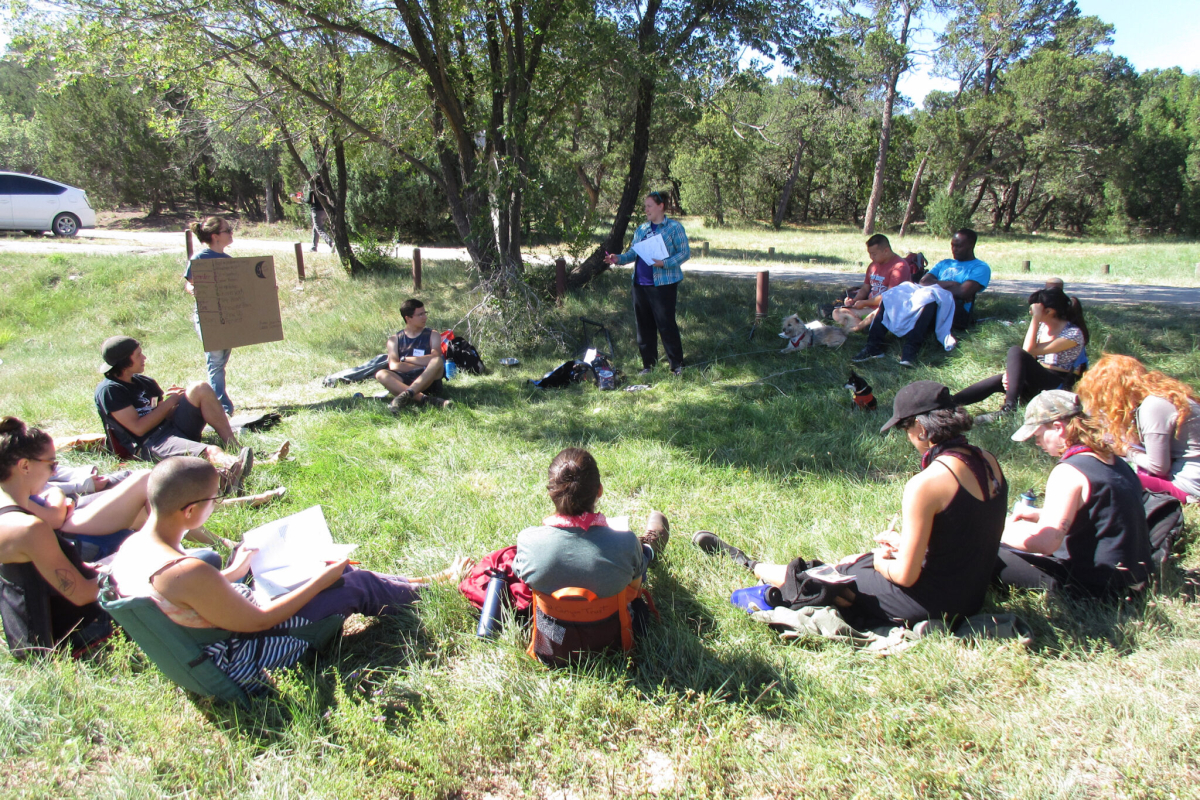
The scientist, an empathetic woman in her 60s, remembers being invited to speak five years ago at an event to communally grieve the Earth in her native San Francisco. Always politically active, she figured this would be a similar experience to any number of climate protests she had taken part in.
But once there, the scientist said she “had this really crazy experience where I just could not stop crying. And I never had that experience before or since, but I literally just had this feeling where—have you tried to talk, but you’re crying? And it was like that for hours. That was the first time I realized, ‘Wow, this is really hitting me.’”
The scientist first looked for support from her community, having chosen a career in environmental science to maximize her time spent in nature and help protect the animals she has always adored.
She figured her colleagues would be just as distraught as she was. She also couldn’t rely on her two dogs for support as she normally would because, she said, “for me, the biggest thing is the suffering of animals. It gets me deep in the heart.”
But at the EPA, she said, plenty of people were “just going through life,” and not connecting their work and personal lives to climate change. Whereas, she said she was “seeing what’s coming. I would just dig into all the research and the impacts, especially impacts.” The hardest part was the isolation.
The more she learned about climate psychology, the more she realized that “we’ve never had to face a problem of this magnitude. We are just not equipped to do it.”
The human psyche, she said, is just not designed to deal with an intractable problem whose consequences will continue to unfold for millenia.
She has come to believe that the biggest roadblocks to meaningful climate action are the barriers that people erect to protect themselves from the emotional and psychological toll of the climate crisis.
Through her work with Good Grief Network, and another online support community, she found that the people who didn’t shy away from the full emotional impact of even the worst-case scenarios of the climate crisis were the ones taking the most drastic action both in their lives and the fight against climate change. They had confronted just how bad it could get, so no longer felt the need to protect themselves with denial and wishful thinking.
She continues to be active in a support group for people who are concerned that a climate or societal collapse may be imminent, because she feels like she is most understood by other people who are fully engaged with the crisis. She recommends that people find a group for continuing support, like the Collapse Club weekly video meetings.
“I think just from a practical perspective for us to be able to save ourselves, we have to face it… and we’re not facing it because it’s difficult emotionally and it’s difficult psychologically.”
It is too much to face alone. “We have to figure out how to come together as human beings in this time,” the EPA scientist said, “and live.”



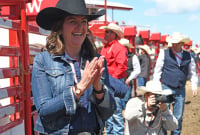
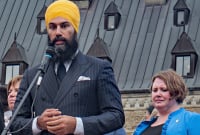
Comments